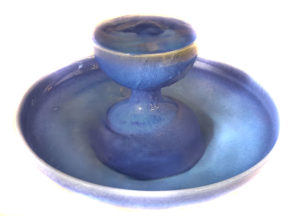Many Meditation practitioners often use the sound of water on which to  focus, calm the mind and relax the body and spirit.
focus, calm the mind and relax the body and spirit.
In the practice of meditation we try to focus on one thing in order to keep the mind still and not wandering. Often we use the breath for this, or a visual aid such as a Mandala. Sounds too can be used and indoor fountains are wonderful in this use. The gentle sound has  enough variation to hold the attention without inducing tiredness while the softness of the sound soothes and refreshes. There are many high-tech aids that are supposed to assist in meditation, but these are most certainly not needed.
enough variation to hold the attention without inducing tiredness while the softness of the sound soothes and refreshes. There are many high-tech aids that are supposed to assist in meditation, but these are most certainly not needed.
It is important, we feel, that the water source be either a natural source as is found outside, or a high quality indoor fountain. Too much complexity, poor quality and imitation materials are not conducive to peace and will, if subliminally only, detract from the tranquility sought.
This page is not meant to be a guide to meditation but we here offer the results of our experiences. We have been practicing mindfulness for decades so are not initiates to this utterly invaluable practice. Admittedly, meditation is not easy. It requires practice and perseverance but the rewards are beyond worth the effort.
When using an indoor fountain to aid meditation, first sit calmly in whatever position you can easily maintain, even in a chair if that is what you need to be fully relaxed, at first with eyes open. Focus on the sounds of the fountain. Hear the variations of the sounds of water falling into water. Do this for some minutes, then close the eyes, keeping your focus on the sounds. The rest is a matter of practice and is the same regardless of what your focus is – be it your breath, a visual aid, or the sounds of water.

